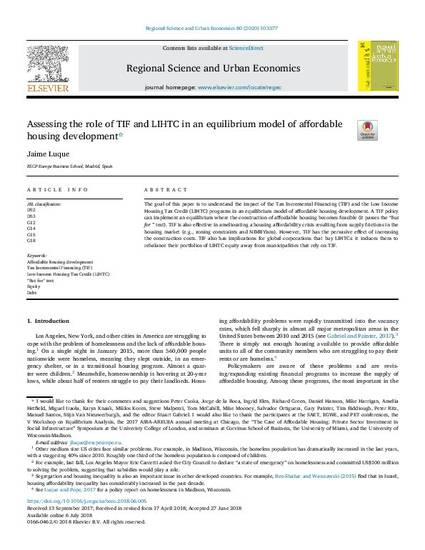
Article
Assessing the Role of TIF and LIHTC in an Equilibrium Model of Affordable Housing Development
Regional Science and Urban Economics
(2020)
Abstract
The goal of this paper is to understand the impact of the Tax Incremental Financing (TIF) and the Low Income Housing Tax Credit (LIHTC) programs in an equilibrium model of affordable housing development. A TIF policy can implement an equilibrium where the construction of affordable housing becomes feasible (it passes the "but for" test). TIF is also effective in ameliorating a housing affordability crisis resulting from supply frictions in the housing market (e.g., zoning constraints and NIMBYism). However, TIF has the pervasive effect of increasing the construction costs. TIF also has implications for global corporations that buy LIHTCs: it induces them to rebalance their portfolios of LIHTC equity away from municipalities that rely on TIF.
Keywords
- affordable housing development,
- Low Income Housing Tax Credit (LIHTC),
- equity,
- debt,
- "but for" test,
- Tax Incremental Financing (TIF)
Disciplines
Publication Date
2020
Citation Information
Jaime Luque. "Assessing the Role of TIF and LIHTC in an Equilibrium Model of Affordable Housing Development" Regional Science and Urban Economics Vol. 80 (2020) p. 1 - 14 Available at: http://works.bepress.com/luque/36/
Creative Commons license

This work is licensed under a Creative Commons CC_BY-NC-ND International License.
